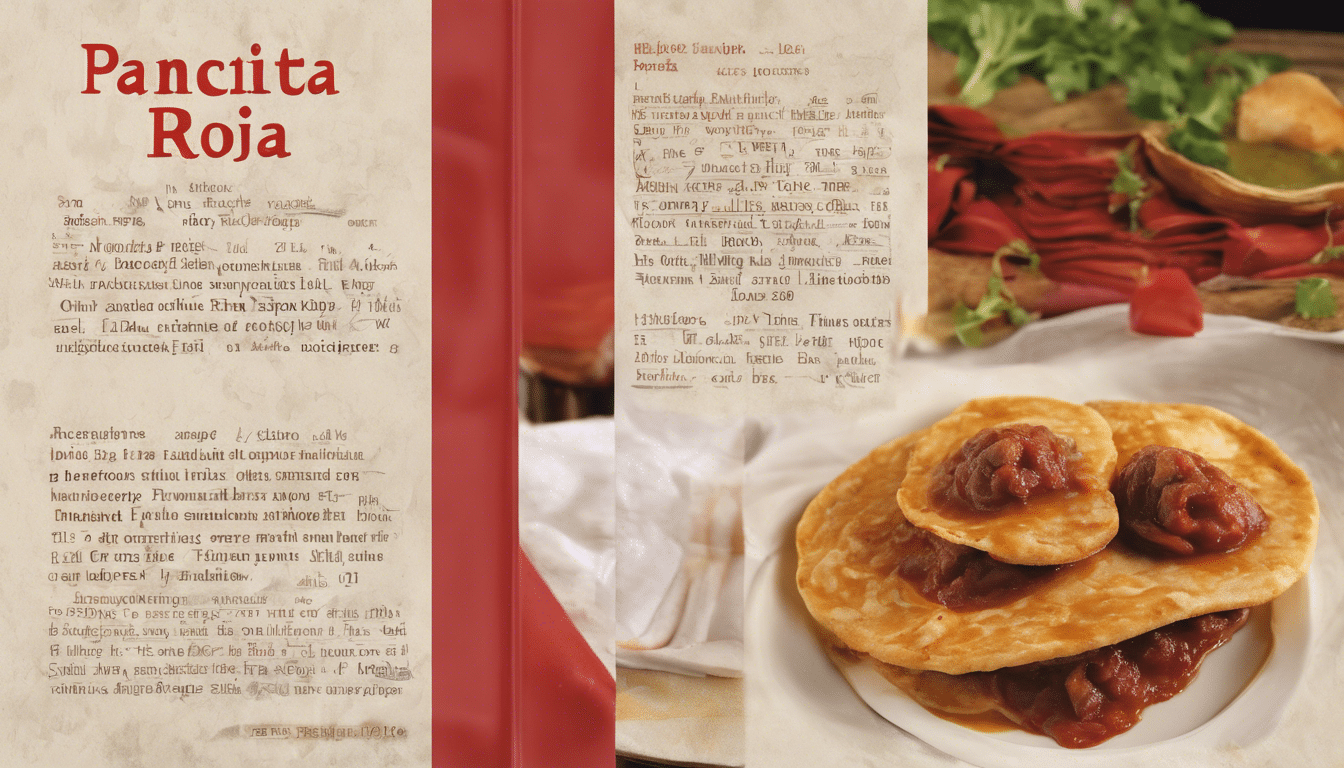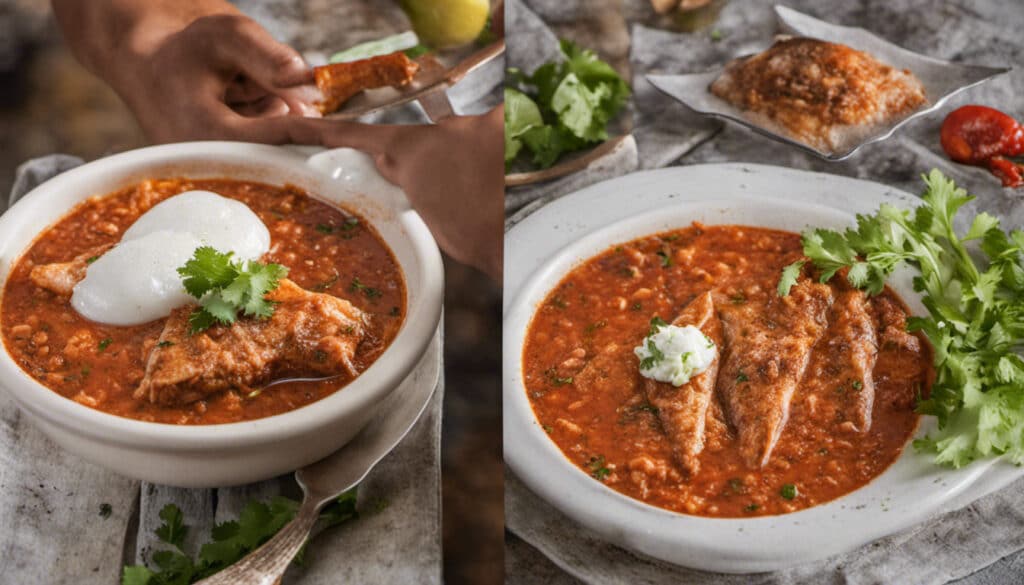| Prep: 30 mins | Cook: 3 hours | Difficulty: Intermediate | Serves: 6 |
| kcal | fat | saturates | carbs |
| 529 | 17g | 5g | 30g |
| sugars | fibre | protein | salt |
| 5g | 6g | 40g | 1.8g |
Why I Love Mexican Pancita Roja

A Love Letter to Pancita Roja
When the warmth of my culinary upbringing meets with the exotic heat of a foreign flavor, I find myself reaching headlong into the mouthwatering labyrinth that is Pancita Roja—a delectable invitation to a time-worn tradition of the Mexican tablescape. While the harmonious blend of Asian and Pacific Northwest cuisines permeates my kitchen, every now and then, an unfamiliar tune serenades my culinary curiosity—drawing me towards distant lands and hearty flavors like that nestled within this robust stew.
An Ode to Cultural Blends
The beauty of Pancita Roja does not lie only in its robust flavor but also in a striking parallel I discovered—its likeness to the Japanese Motsunabe. Just as the tripe in Pancita Roja takes center stage in this Mexican dish, Motsunabe— a hot pot dish from Fukuoka, gives the entrails of a cow a starring role ([1]). Such delightful similarities in seemingly divergent cuisines provide a testament to the adage that food is the universal language, uniting cultures in the most delicious way possible.
I must confess, the spicy concoction of guajillo, arbol, and ancho peppers in Pancita Roja evokes my fondness for the spirited heat in conventional Japanese cuisine, which is brought out differently in the use of wasabi or other native condiments.
Inspiration and Pairings
A major part of my admiration for Pancita Roja though is born from the unleashed creativity of the legendary Mexican-American chef, Pati Jinich. Her work ignites my culinary adventures with her fearless incorporation of passion and heritage into her creations.
Consider pairing this soulful stew with homemade guacamole and a basket of warm tortillas to complement and balance the heat. Or, take a leaf from my Pacific Northwest book and consider a refreshing mint and cucumber salad, mixed with a soy-based dressing to tie your meal back to the merry fusion of cuisines.
What You’ll Need
- 2 pounds of tripe
- 3/4 gallon of water
- 1/2 head of garlic
- 1 white onion, cut into quarters
- 1 bunch of fresh epazote
- 2 tablespoons of vegetable oil
- 4 guajillo peppers
- 4 arbol peppers
- 2 ancho peppers
- 4 cloves of garlic, peeled
- 1 white onion, finely chopped
- 1 teaspoon oregano
- 1 teaspoon black pepper
- 1 tablespoon salt
- 2 bay leaves
- 1/2 cup chopped fresh cilantro
- 1/2 cup chopped white onion for garnish
- 2 limes, cut into wedges for serving
Method
Step One
Firstly, cut the tripe into small bite chunks and rinse well under cold water. Put the pieces into a large pot with 3/4 gallon of water, 1/2 head of garlic, the quartered white onion, and fresh epazote. Bring it to a boil over high heat, then lower the heat and let it simmer.
Step Two
Continue simmering until the tripe is tender, it may take approximately 2-3 hours. Remember to remove any foam that may form on the surface during the simmering process.
Step Three
While the tripe is simmering, take a comal (a flat griddle) or a skillet and heat the vegetable oil over medium heat. Add the guajillo, ancho, arbol peppers to the oil and toast them lightly. Be sure not to burn the peppers, just toast them enough to release their flavors.
Step Four
Remove the toasted peppers from the comal or skillet and place them in a blender along with 4 cloves of garlic, finely chopped white onion, oregano, black pepper and salt. Blend until a smooth sauce is formed. If required, you can add some water to facilitate the blending process.
Step Five
When the tripe is tender, remove the garlic, onion, and epazote from the pot. Above the pot, strain the blended sauce using a fine-mesh sieve and mix well.
Step Six
Add the bay leaves to the pot, lower the heat, cover the pot and simmer for about an hour to let the flavours come together.
Step Seven
When ready to serve, ladle the Pancita Roja into bowls and garnish with freshly chopped cilantro and chopped white onions. Serve hot with lime wedges.



